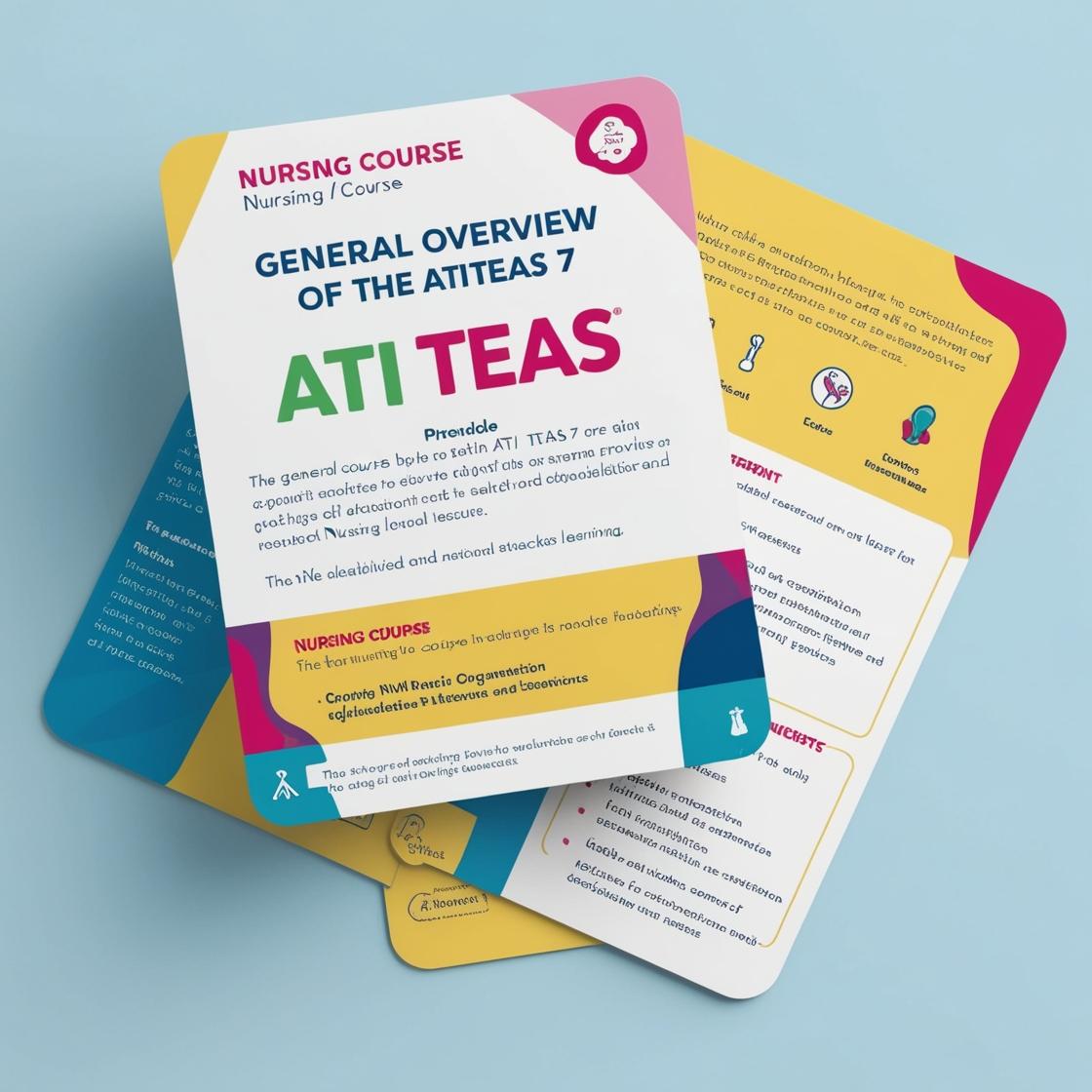ATI TEAS 7
TEAS 7 practice test free science
1. What is the process of converting light energy into chemical energy called?
- A. Respiration
- B. Fermentation
- C. Photosynthesis
- D. Hydrolysis
Correct answer: C
Rationale: - Respiration (Option A) is the process by which cells break down glucose to release energy. - Fermentation (Option B) is an anaerobic process that also involves the breakdown of glucose to release energy. - Hydrolysis (Option D) is a chemical process that involves the breakdown of molecules by adding water. Photosynthesis (Option C) is the process by which green plants, algae, and some bacteria convert light energy into chemical energy in the form of glucose. During photosynthesis, plants use sunlight, carbon dioxide, and water to produce glucose and oxygen. This process is essential for the survival of plants and ultimately sustains life on Earth by providing oxygen for other organisms to breathe and serving as a source of energy in the food chain.
2. Which division of the peripheral nervous system is responsible for transmitting signals from the central nervous system to skeletal muscles, enabling voluntary muscle movements?
- A. Somatic nervous system
- B. Autonomic nervous system
- C. Sympathetic nervous system
- D. Parasympathetic nervous system
Correct answer: A
Rationale: The correct answer is the somatic nervous system. The somatic nervous system is responsible for transmitting signals from the central nervous system to skeletal muscles, allowing for voluntary muscle movements. The autonomic nervous system, sympathetic nervous system, and parasympathetic nervous system are not involved in voluntary muscle movements. Instead, they regulate involuntary functions of the body such as heart rate, digestion, and breathing. Therefore, choices B, C, and D are incorrect as they are not associated with voluntary muscle movements.
3. Which of the following is a MAJOR consequence of a stroke?
- A. Irregular heart rhythm.
- B. Rapid weight gain or loss.
- C. Brain damage due to interrupted blood flow.
- D. Chronic fatigue and muscle weakness.
Correct answer: C
Rationale: A major consequence of a stroke is brain damage due to interrupted blood flow. Strokes occur when blood flow to the brain is blocked or reduced, leading to the death of brain cells. This interruption in blood flow results in brain damage, which can cause physical and cognitive impairments such as paralysis, speech difficulties, memory problems, and sensory disturbances. The severity and location of the stroke determine the extent of the consequences experienced by the individual. Choices A, B, and D are incorrect. Irregular heart rhythm is not a direct consequence of a stroke but may occur as a complication. Rapid weight gain or loss and chronic fatigue with muscle weakness are not typically considered major consequences of a stroke, which primarily affects the brain due to interrupted blood flow.
4. What is the definition of power in physics?
- A. The rate of change of energy
- B. The rate of doing work or transferring energy
- C. The measure of an object's potential energy
- D. The force exerted on an object
Correct answer: B
Rationale: The correct answer is B: 'The rate of doing work or transferring energy.' Power in physics is defined as the rate at which work is done or energy is transferred. It is a measure of how quickly energy is transferred or converted. Power is not the same as energy itself but rather how fast energy is being transferred or converted. Choice A, 'The rate of change of energy,' is incorrect because power is about the rate of work or energy transfer, not just the change in energy. Choice C, 'The measure of an object's potential energy,' is incorrect as power is not a measure of potential energy but rather the rate of energy transfer. Choice D, 'The force exerted on an object,' is incorrect as power is related to work and energy transfer, not just force exerted.
5. What type of force enables a car to take a sharp turn while moving in a circular path?
- A. Centripetal force
- B. Tension force
- C. Frictional force
- D. Gravitational force
Correct answer: A
Rationale: Centripetal force is the force that allows an object to move in a circular path. When a car takes a sharp turn, centripetal force acts towards the center of the circle, enabling the car to stay in the curved path. Tension force is transmitted through a string, rope, cable, or wire when pulled tight, and it is not directly related to a car's turning motion. Frictional force opposes motion and is not the primary force responsible for a car's ability to take a sharp turn. Gravitational force is the attraction between masses and does not directly influence a car's ability to maneuver in a curved path.
Similar Questions

Access More Features
ATI TEAS Premium Plus
$150/ 90 days
- Actual ATI TEAS 7 Questions
- 3,000 questions with answers
- 90 days access
ATI TEAS Basic
$99/ 30 days
- 3,000 Questions with answers
- 30 days access
